In a remarkable way, stones combined with water and greenery create an atmosphere of tranquility and attract both romantics and serious people. With a thoughtful approach, you can construct a heavenly corner on your own property, where a DIY alpine rock garden will become a favorite relaxation spot and the main pride of the homeowners.
Where to properly place an alpine rock garden on your property
It is advisable to allocate an elevated area of the yard for the future alpine rock garden, where there are no trees or shrubs. If the yard of a private house is located in a lowland with close groundwater, a drainage system will need to be installed.
Important!
The view of the alpine garden should be unobstructed from various angles, as over time it will become the main landscape decoration.
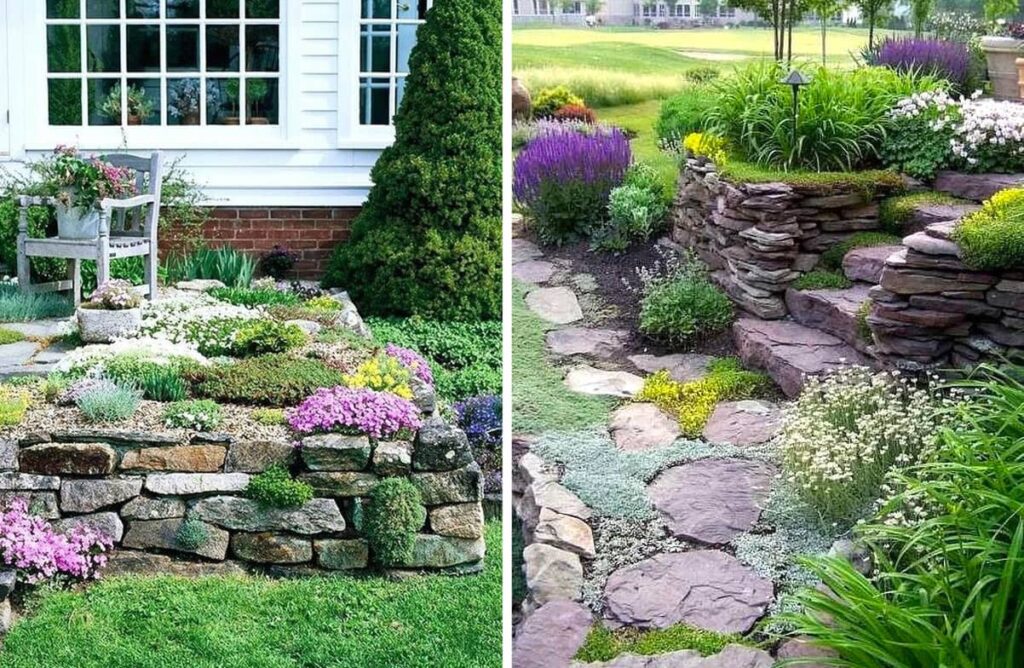

If there is already an artificial pond, a small fountain or waterfall on the site, it makes sense to use your creative imagination and create several sketches, considering options for integrating these structures with stone constructions.

Preparatory work
- Having determined the necessary dimensions and configuration of the alpine garden according to the plan, you should mark the area for the excavation, which can be slightly larger than the future structure.
- Next, remove and set aside the fertile soil layer, and then dig the excavation.
- Carefully level the bottom, compact it, and fill it with a cushion made of any available materials, most often gravel.
Important!
To achieve the necessary compaction, you need to add a few buckets of water.
- On top, form another sand-gravel layer, onto which water is also poured. If you cannot achieve good density, you can additionally compact the cushion.
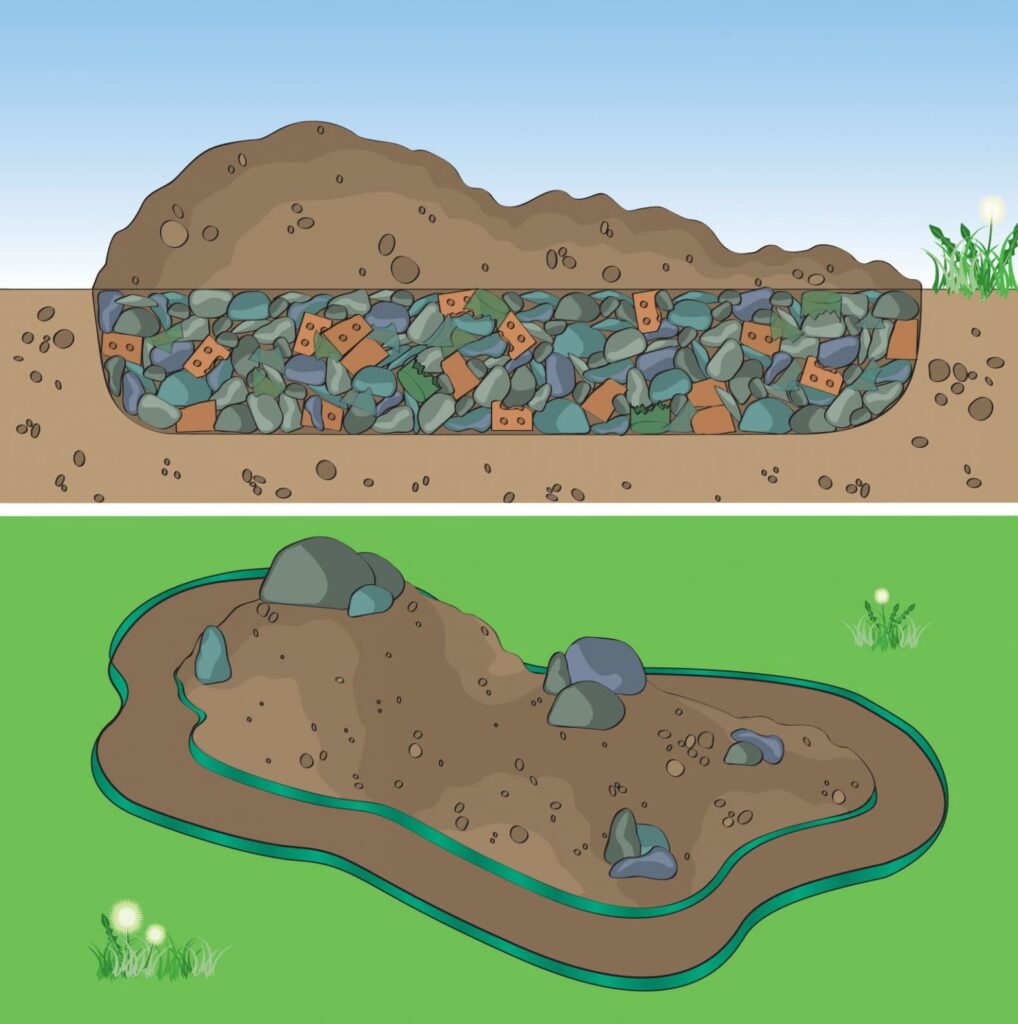
Soil preparation for the alpine garden:
- The soil that was previously set aside during the excavation process should be cleared of roots and mixed with compost or fertile soil taken from a deciduous forest. If the soil is heavy clay, you will need to add sand for aeration.
- After filling the drainage cushion with the prepared soil mixture, leave the prepared base for about three weeks to allow for additional soil settling.
Important!
If the preparatory work was done in the fall, it is advisable to continue working only in the spring.
How to create an alpine garden with your own hands
Do not rely on your improvisational abilities when laying out the main structural elements of the future garden. It is wise to develop a plan beforehand and carry out the work accordingly.
First, install larger boulders around the perimeter and embed them more than halfway into the soil. By doing so, you’ll ensure the entire structure’s stability. To secure the stones further, consider using a cement-sand mortar.

Installing stones:
- Decorative paving slabs will look beautiful and interesting if laid out in the form of a path around the entire perimeter of the structure.
- The second row will consist of smaller stones. You can create several tiers, each of which will rise slightly above the previous one – this is regulated by the height of the pre-poured mound.
- Gaps between the stones should be made according to the plan. If necessary, you can add additional soil mixture to these gaps, in which plants will be planted.
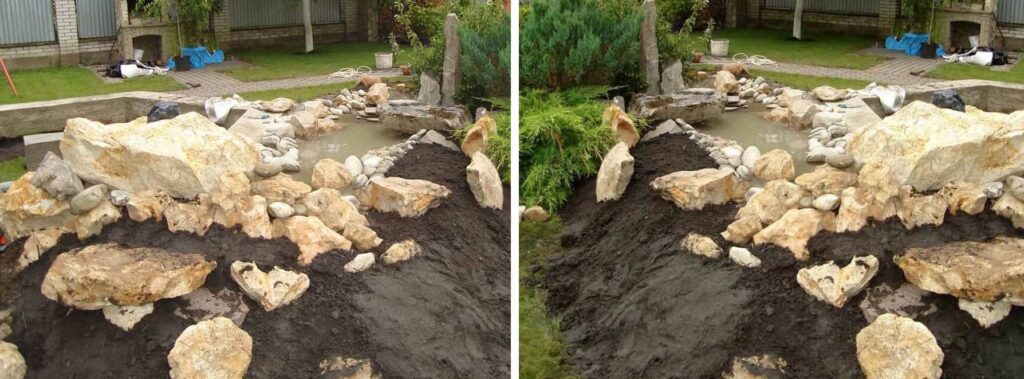
Stones for Alpine Garden: Key Considerations for Choosing the Right Ones
When choosing stones for an alpine garden, there are several key criteria to consider:
- They should not be porous and fragile.
- Avoid using round or overly angular boulders.
- It is also not harmonious to use stones of different types or colors in the composition.
- The most noble and refined alpine gardens consist of samples of different shapes and sizes, but of the same type of stone.
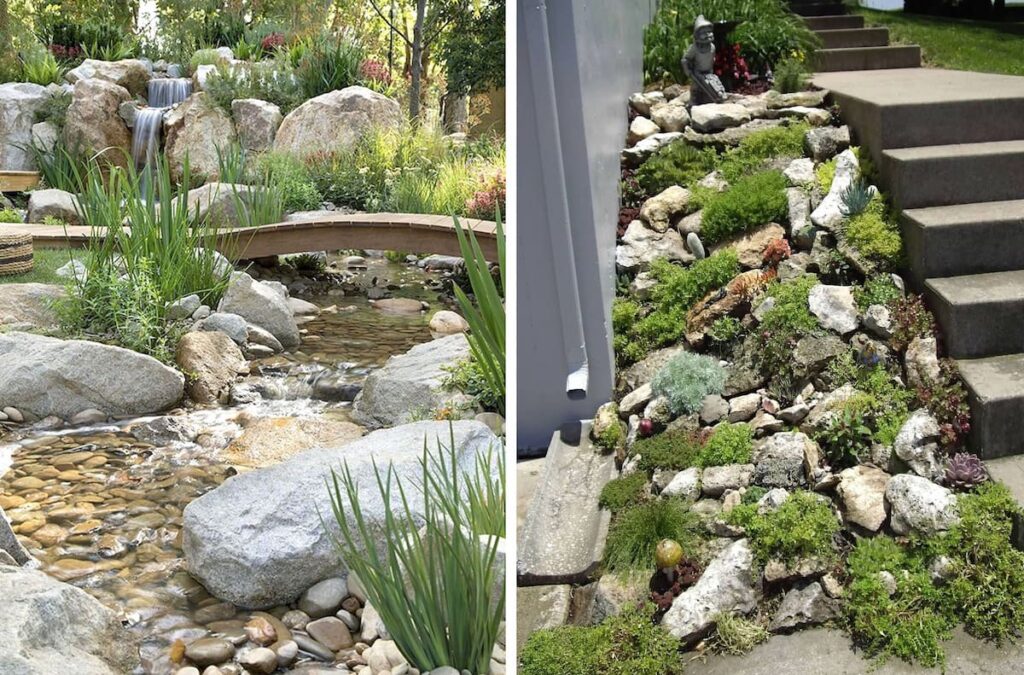
Useful to know!
It is advisable to choose varieties of granite, sandstone, or basalt for an alpine slide. Rapidly deteriorating tuff or dolomite, which are affected by moisture, will not allow you to enjoy the beauty of the created natural corner for a long time.
Choosing plants for an alpine slide
You’ll find creating an alpine slide by yourself to be both complex and laborious. Several factors dictate the beauty of the final result, most notably the selection and placement of decorative plants.
Landscape design experts suggest beginning with the planting of dwarf coniferous plants. These plants form the compositional basis. Following this, choose the rest of the plants with an emphasis on low growth. This ensures they won’t take up too much space or obscure the stone elements.
Tips for creating an alpine slide with your own hands:
- After planting the plants, the soil around them can be mulched with small gravel. Mosses and low grasses will add originality to the entire planting.
- To create bright spots in the composition, low-growing bulbous crocuses or tulips can be planted in separate groups.
- It is important to select perennial plant forms with different flowering periods to ensure the decorative image of the alpine slide until deep autumn.
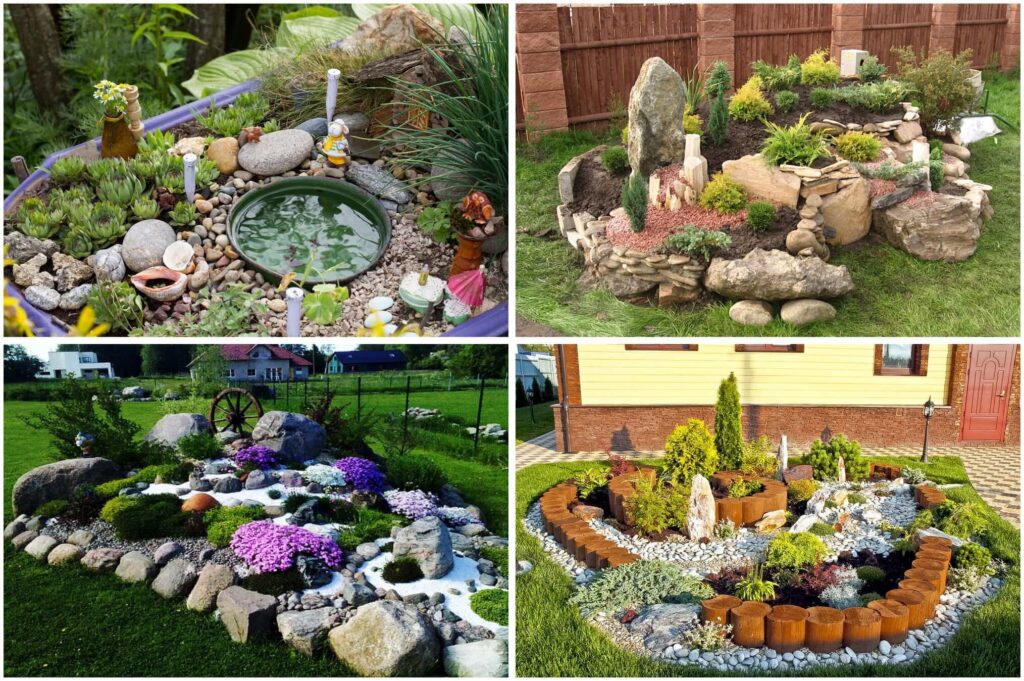
Caring for your alpine rock garden
An alpine rock garden is a decorative feature made up of stones, plants, and flowers. The direct sun, wind, and excess moisture can often have a negative impact on the plants, so it’s important to give your alpine garden special care.
Here are some tips on how to care for your alpine rock garden:
- Water the plants as needed, ideally using a watering can instead of a hose to avoid soil erosion.
- After heavy rain, you can top up the soil with fresh earth. Regularly check the stability of the stones and take action to reinforce them if necessary.
- Fertilize the plants no more than once a month to avoid overstimulating their growth.
- Remove dry leaves, flowers, and weeds in a timely manner to keep your rock garden looking fresh and prolong the life of your beloved plants.
Tip:
You can also install a small artificial plastic pond to enhance the composition. You can create a cascading water effect by using a pump to move water from the lower reservoir to the upper one.
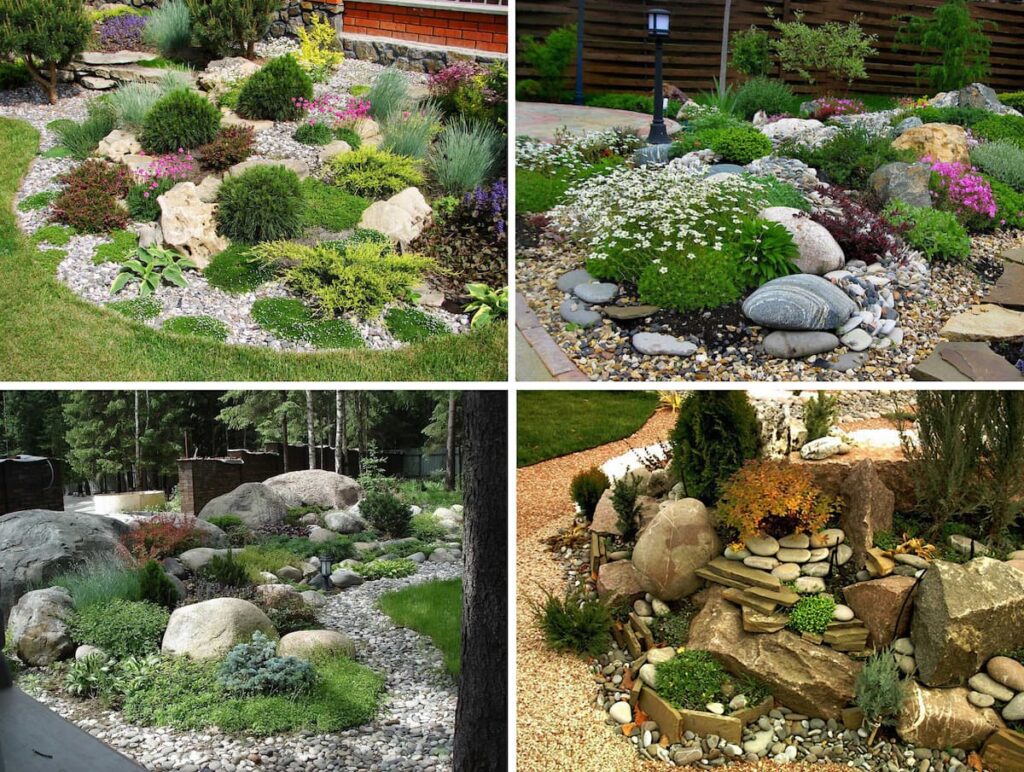
Conclusion! There can be many options for creating an alpine slide with your own hands, and each of them will bring charm to your backyard.


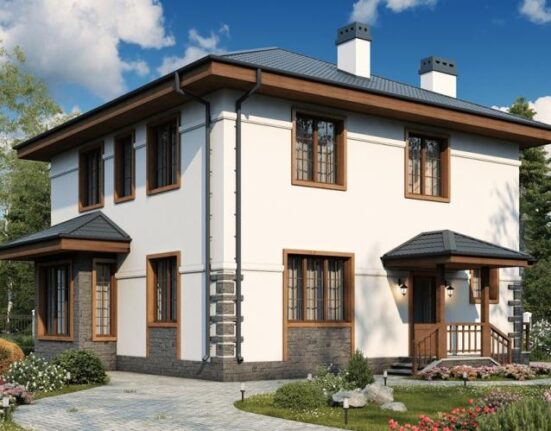

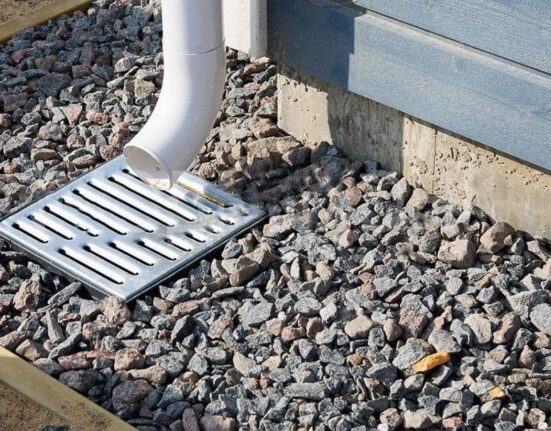
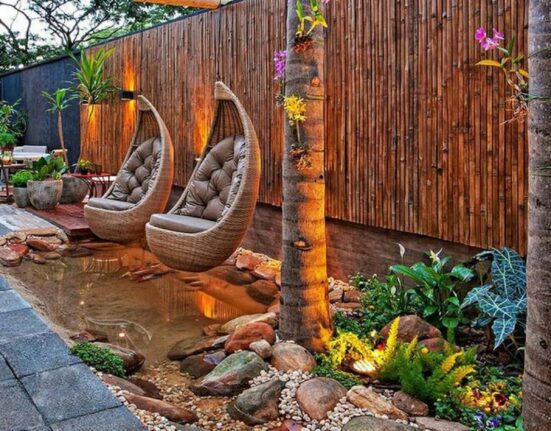
Leave feedback about this